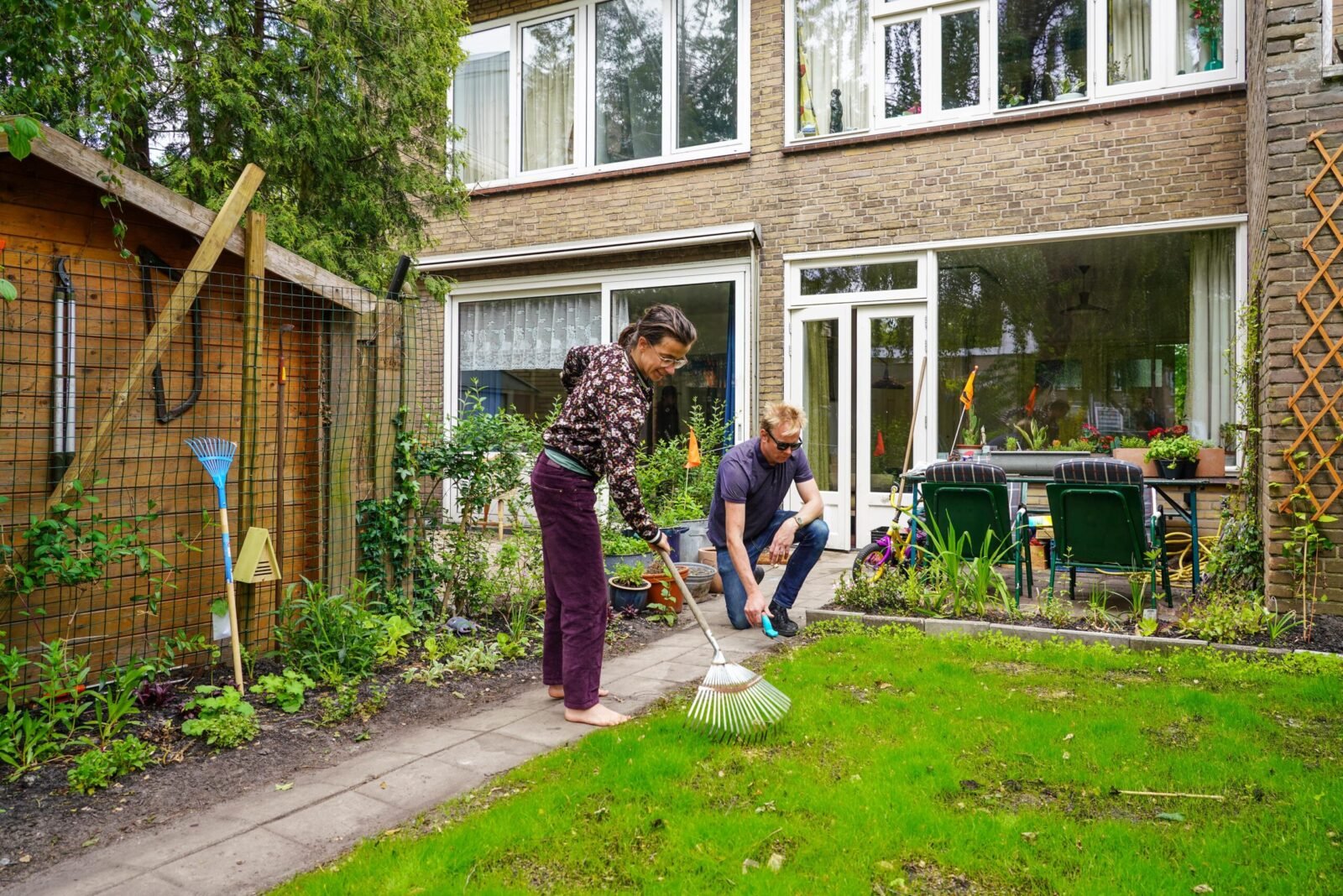The Reign of the Stone Front Yard is Over

Local governments across Europe are banning stone and concrete gardens, in favour of more climate-resilient urban greening.
Gravel or tiled gardens have gained popularity in the past few decades as a low-maintenance alternative to the typical green garden. Gardens across Europe are turning from green to grey at a rapid rate. The number of front gardens in the UK that are totally paved over tripled between 2005 and 2015, from 1.5m to 4.9m. And in the Netherlands, more than a third of garden space is now covered with impermeable surfaces such as stone, gravel or tiles. Several social media accounts have emerged in order to mock these concrete gardens and draw attention to the problems they pose. The biologist and botanist Ulf Soltau has even published a book about the phenomenon in Germany, titled Gärten des Grauens or ‘Gardens of Horror’.
The problem with these concrete gardens is not only that they are an eye-sore, but there are also several environmental issues associated with them. First and foremost, the reduction of green space in gardens is hugely counterproductive to fostering local biodiversity. As gardens turn from green to grey, the habitat available for plants and animals shrinks considerably. The second issue involves flood risk — stones and tiles are impermeable and prevent rainwater from being absorbed into the soil below. Heavily grey areas are therefore at an increased risk of flooding as there is nowhere for excess water to go. Overheating is also a problem; in the summer stone materials retain heat and create urban heat islands, whereas trees and plants create a refreshing cooling effect.

Several local governments across Europe have, or are considering, limiting the use of tiles and concrete in gardens, or banning them completely. The Baden-Württemberg government in south-west Germany, for example, stresses that gravel gardens have not been permitted in the state since the mid-1990s due to their negative impact on biodiversity. But, according to a spokesperson, many were not actually aware of the law and favoured gravel gardens for their low maintenance requirements. A new nature conservation law created in 2020 aims to make this ban unambiguously clear and requires that existing gravel gardens are removed or redesigned. Elsewhere, city governors have proposed that gardens in the district of Amsterdam Oud-West should be no more than half tiled. The law is introduced as the district has been classed as ‘extra vulnerable’ to flooding during extreme rainfall.

Bans that require the re-greening gardens, or only allowing the development of green new gardens are a welcome tool to reverse the negative environmental impacts associated with grey urban spaces. But to accompany these bans, it is necessary to empower residents with the tools to introduce more greenery into their gardens. An example of one such initiative is Tegels eruit, groen erin or ‘Tiles Out, Green In’. The Amsterdam-based citizens initiative helps residents to start removing their tiles and creating a greener garden, through practical support, accompanied by a network of information and consultancy services about how to make gardens more rainproof and adaptive. Tiles Out, Green In strive towards “making gardens greener, healthier and more climate-proof” for a more livable city. By the end of 2020, Tiles Out, Green In had removed over 20,000 garden tiles, freeing up 2,267 m2 of new green space in the very densely built centre of Amsterdam.



